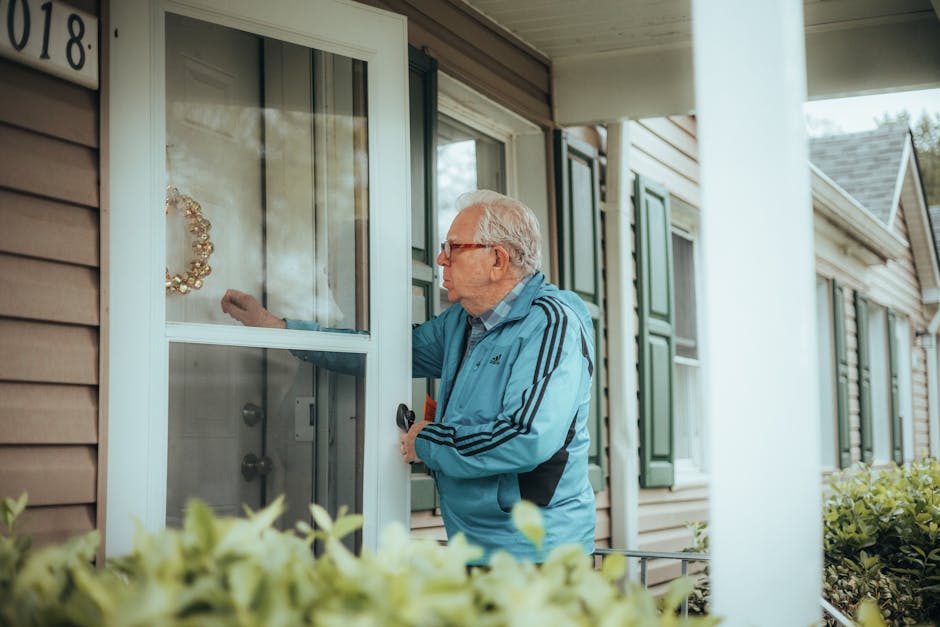Economical Senior Housing Solutions: Quality at a Low Price
Finding high-quality, affordable housing for seniors can feel like solving a puzzle with too many pieces. It’s a topic that touches millions of families, as the cost of living continues to rise while older adults often live on fixed incomes. But here’s the good news: affordable senior housing options do exist, and many of them strike a remarkable balance between quality and price.

Understanding What "Affordable" Really Means
What’s affordable to one person might feel out of reach for another, so the first step is defining what budget constraints you’re working within. For many seniors, Social Security benefits serve as a primary income source. According to the Social Security Administration, the average monthly benefit for retired workers in 2023 was just over $1,800. This means housing costs must stay well below this figure to leave room for other essentials like food, healthcare, and transportation.
A common rule of thumb is to spend no more than 30% of your monthly income on housing. For someone earning $1,800 monthly, this equates to about $540 for rent or mortgage payments. While this sounds restrictive, there are creative ways to make it work by tapping into local resources and government programs.
Exploring Subsidized Housing Programs
Government-backed programs are often a lifeline for seniors seeking affordable housing. The U.S. Department of Housing and Urban Development (HUD) offers several options tailored specifically for older adults:
- Section 202 Supportive Housing for the Elderly: This program provides rental assistance to low-income seniors aged 62 and older. Properties under Section 202 also include supportive services like meal programs or housekeeping assistance, making it ideal for those who need a little extra help with daily tasks.
- Housing Choice Voucher Program (formerly Section 8): Seniors can use vouchers to cover part of their rent in privately-owned apartments or homes. This gives them flexibility in choosing a location and type of housing that suits their needs.
Each program has its eligibility requirements based on income and assets. Applications can involve long waitlists, so it’s worth reaching out to your local public housing authority early in your search process. For more details on HUD programs, visit HUD.gov.
Shared Living Arrangements: A Win-Win Solution
If you’ve ever watched an episode of “The Golden Girls,” you already know how shared living arrangements can be both economical and enjoyable. Co-housing options allow seniors to split rent or utility costs while enjoying companionship, a significant benefit for those who might otherwise feel isolated.
Platforms like Silvernest (Silvernest.com) connect homeowners willing to rent out spare rooms with renters looking for affordable housing options. These arrangements often work well for seniors because they provide financial relief while fostering social connections. Think of it as modern-day house-sharing with the added bonus of creating community.
The Role of Location in Reducing Costs
Where you choose to live plays a massive role in affordability. Urban centers often come with sky-high rents, but suburban or rural areas may offer lower-priced alternatives without compromising quality. Smaller towns in states like Iowa or Arkansas boast senior communities with rental prices far below the national average.
Beyond state-level trends, many cities have senior-friendly zoning laws that encourage the construction of affordable units tailored specifically for older adults. AARP’s Livability Index (LivabilityIndex.AARP.org) is a fantastic tool for comparing locations based on factors like affordability, healthcare access, and public transportation, key considerations for seniors.
Clever Ways to Cut Living Expenses
If moving isn’t an option or you’d prefer to stay in your current home, there are still ways to make life more affordable:
- Accessory Dwelling Units (ADUs): Also known as “granny flats” or in-law suites, these small housing units can be added to existing properties. They offer an opportunity for multigenerational living while maintaining privacy and they’re far cheaper than traditional housing.
- Energy-Efficient Upgrades: Simple adjustments like adding insulation or switching to LED lighting can significantly reduce utility bills over time.
- Property Tax Relief: Many states offer property tax exemptions or reductions for senior homeowners. Check with your local tax office to see if you qualify.
Small adjustments like these can make a big difference in monthly expenses without requiring major sacrifices.
A Quick Look at Costs Across Options
| Housing Option | Average Monthly Cost | Key Features |
|---|---|---|
| Subsidized Apartments (Section 202) | $500–$700 | Rental assistance; supportive services included |
| Shared Living Arrangements (e.g., Silvernest) | $400–$600 | Split costs; fosters social connections |
| Independent Senior Living Communities | $1,500–$3,000 | Amenities like fitness centers and meal plans; no medical care included |
| Nursing Homes (Private Room) | $7,900 (national average) | 24-hour skilled nursing care; highest cost option |
| Accessory Dwelling Unit (ADU) | $50k–$150k (one-time cost) | Permanent solution; multigenerational living potential |
The Path Forward: Making It Work on Any Budget
No matter where you stand financially, there’s likely an option out there that fits your needs without breaking the bank. Whether it’s leveraging government programs, exploring co-housing setups, relocating to a more affordable area, or making strategic upgrades to your current home, each approach brings unique benefits worth considering.
With a bit of research and flexibility, quality senior housing doesn’t have to come at a premium price tag.
You’re not alone in this search; millions of others are navigating similar challenges every day. By focusing on practical solutions tailored specifically for seniors’ needs and budgets, you can ensure that this stage of life is both comfortable and financially sustainable.
